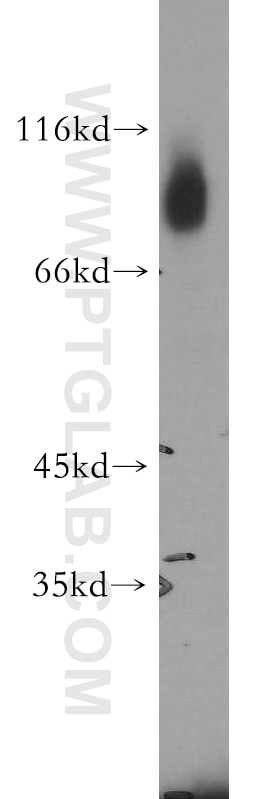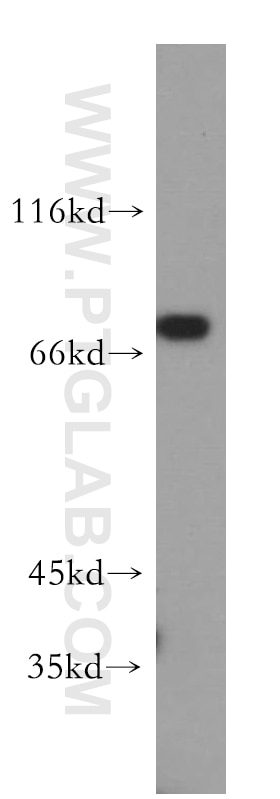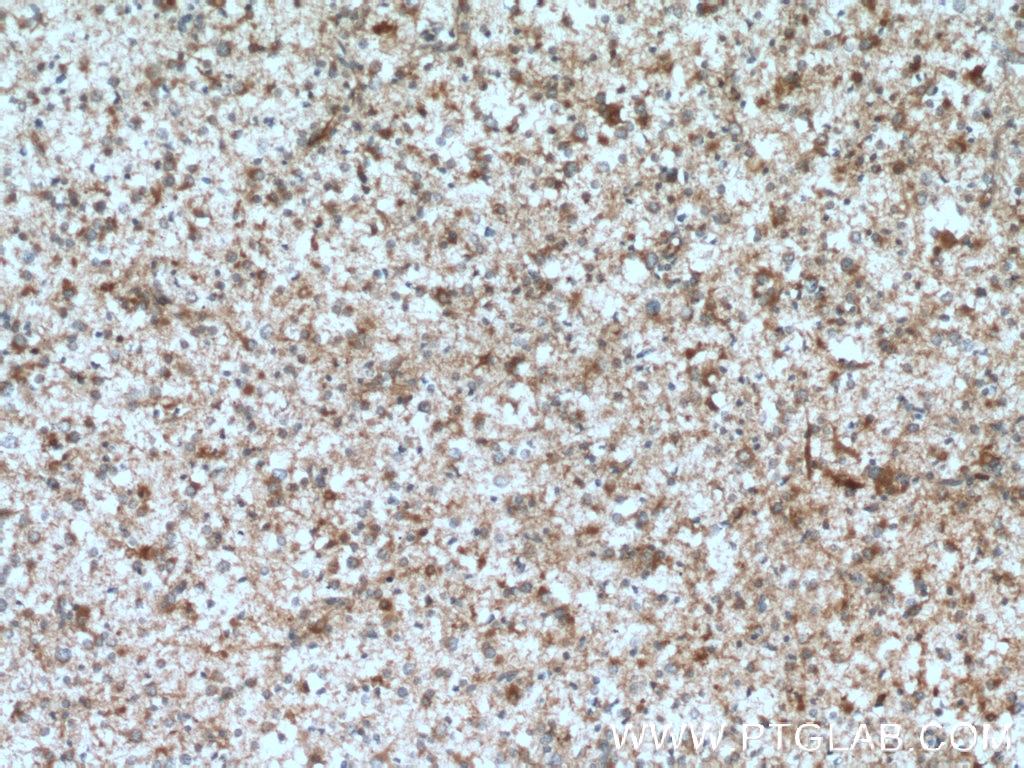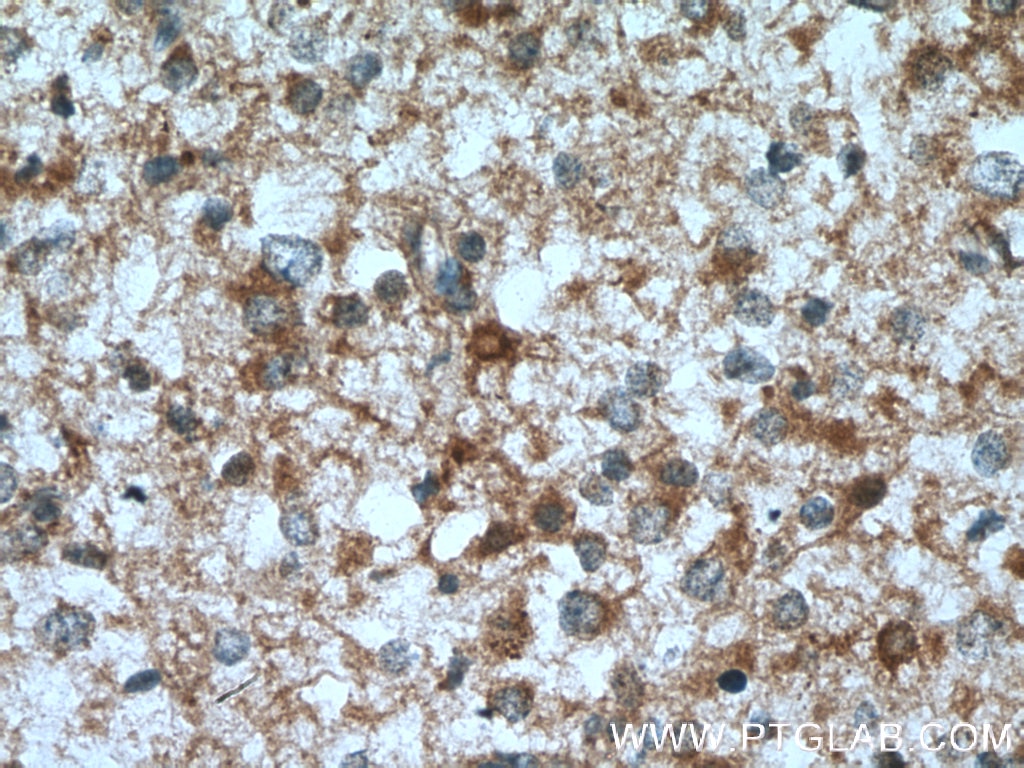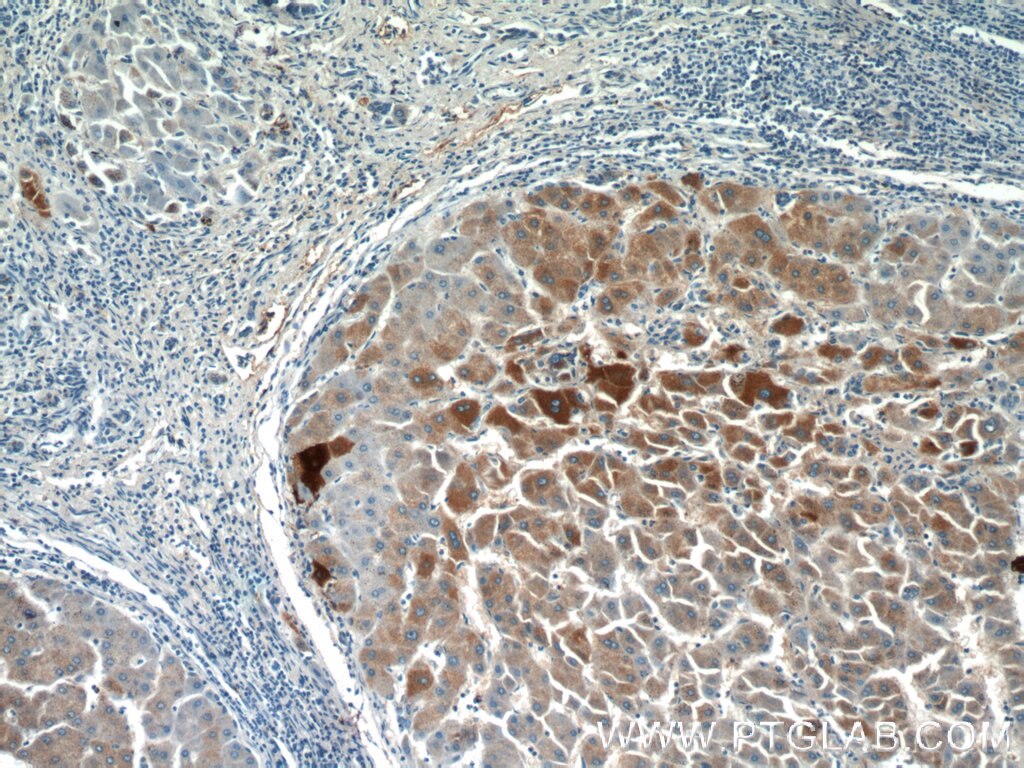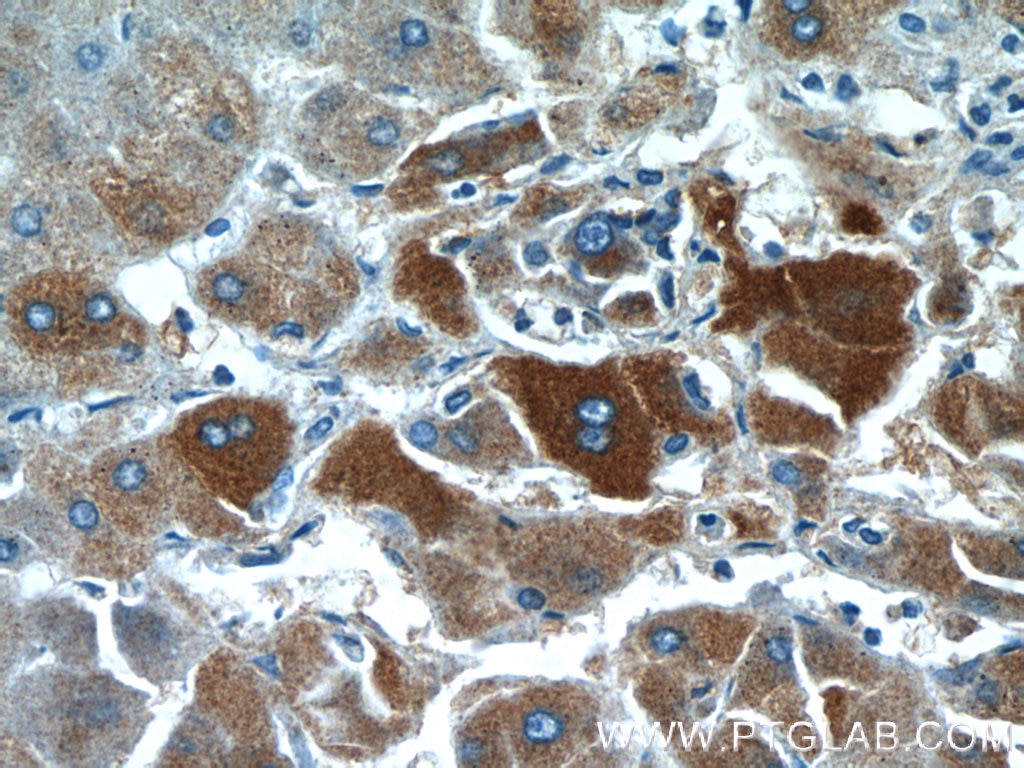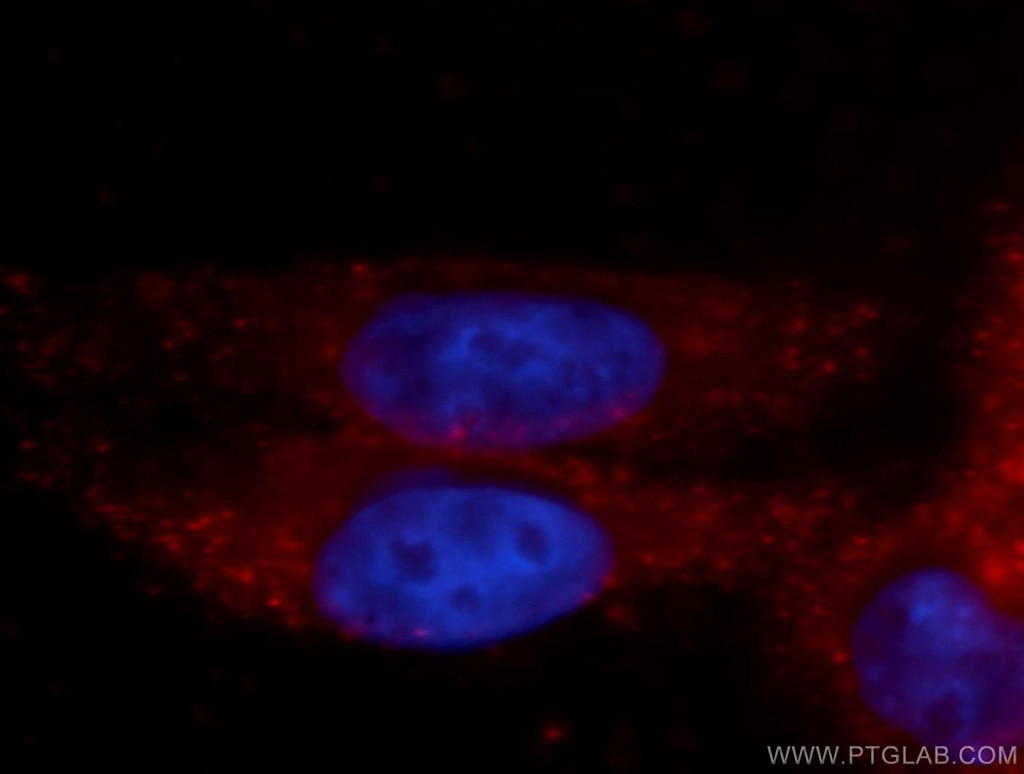- Phare
- Validé par KD/KO
Anticorps Polyclonal de lapin anti-GFPT1
GFPT1 Polyclonal Antibody for WB, IHC, IF/ICC, ELISA
Hôte / Isotype
Lapin / IgG
Réactivité testée
Humain, rat, souris et plus (1)
Applications
WB, IHC, IF/ICC, IP, CoIP, ELISA
Conjugaison
Non conjugué
N° de cat : 14132-1-AP
Synonymes
Galerie de données de validation
Applications testées
| Résultats positifs en WB | tissu de muscle squelettique humain, cellules HepG2 |
| Résultats positifs en IHC | tissu de gliome humain, tissu de cirrhose hépatique humain il est suggéré de démasquer l'antigène avec un tampon de TE buffer pH 9.0; (*) À défaut, 'le démasquage de l'antigène peut être 'effectué avec un tampon citrate pH 6,0. |
| Résultats positifs en IF/ICC | cellules HepG2 |
Dilution recommandée
| Application | Dilution |
|---|---|
| Western Blot (WB) | WB : 1:500-1:1000 |
| Immunohistochimie (IHC) | IHC : 1:50-1:500 |
| Immunofluorescence (IF)/ICC | IF/ICC : 1:20-1:200 |
| It is recommended that this reagent should be titrated in each testing system to obtain optimal results. | |
| Sample-dependent, check data in validation data gallery | |
Applications publiées
| KD/KO | See 5 publications below |
| WB | See 30 publications below |
| IHC | See 4 publications below |
| IF | See 4 publications below |
| IP | See 1 publications below |
| CoIP | See 1 publications below |
Informations sur le produit
14132-1-AP cible GFPT1 dans les applications de WB, IHC, IF/ICC, IP, CoIP, ELISA et montre une réactivité avec des échantillons Humain, rat, souris
| Réactivité | Humain, rat, souris |
| Réactivité citée | rat, Humain, poisson-zèbre, souris |
| Hôte / Isotype | Lapin / IgG |
| Clonalité | Polyclonal |
| Type | Anticorps |
| Immunogène | GFPT1 Protéine recombinante Ag5312 |
| Nom complet | glutamine-fructose-6-phosphate transaminase 1 |
| Masse moléculaire calculée | 681 aa, 77 kDa |
| Poids moléculaire observé | 77 kDa |
| Numéro d’acquisition GenBank | BC045641 |
| Symbole du gène | GFPT1 |
| Identification du gène (NCBI) | 2673 |
| Conjugaison | Non conjugué |
| Forme | Liquide |
| Méthode de purification | Purification par affinité contre l'antigène |
| Tampon de stockage | PBS with 0.02% sodium azide and 50% glycerol |
| Conditions de stockage | Stocker à -20°C. Stable pendant un an après l'expédition. L'aliquotage n'est pas nécessaire pour le stockage à -20oC Les 20ul contiennent 0,1% de BSA. |
Informations générales
GFPT1 (glutamine-fructose-6-phosphate transaminase 1) catalyzes the transfer of an amino group from glutamine onto fructose-6-phosphate, yielding glucosamine-6-phosphate (GlcN-6-P) and glutamate. GFPT1 is the key enzyme of the hexosamine pathway and is required for critical events in neuromuscular transmission. Mutations of GFPT1 cause congenital myasthenic syndromes (CMS). (21310273, 25765662)
Protocole
| Product Specific Protocols | |
|---|---|
| WB protocol for GFPT1 antibody 14132-1-AP | Download protocol |
| IHC protocol for GFPT1 antibody 14132-1-AP | Download protocol |
| IF protocol for GFPT1 antibody 14132-1-AP | Download protocol |
| Standard Protocols | |
|---|---|
| Click here to view our Standard Protocols |
Publications
| Species | Application | Title |
|---|---|---|
Cell Res Mannose antagonizes GSDME-mediated pyroptosis through AMPK activated by metabolite GlcNAc-6P | ||
Cell Metab High dietary fructose promotes hepatocellular carcinoma progression by enhancing O-GlcNAcylation via microbiota-derived acetate | ||
Cell Metab Protein O-GlcNAcylation and hexokinase mitochondrial dissociation drive heart failure with preserved ejection fraction | ||
Circ Res Mitochondrial Protein Poldip2 Controls VSMC Differentiated Phenotype by O-Linked GlcNAc Transferase-Dependent Inhibition of a Ubiquitin Proteasome System. | ||
J Clin Invest Targeting tumor-intrinsic hexosamine biosynthesis sensitizes pancreatic cancer to anti-PD1 therapy. | ||
Nat Commun Tick extracellular vesicles enable arthropod feeding and promote distinct outcomes of bacterial infection. |
Avis
The reviews below have been submitted by verified Proteintech customers who received an incentive for providing their feedback.
FH Kristian (Verified Customer) (06-07-2021) | Mouse testis were stained for Gfpt1 (green) and DAPI (blue)
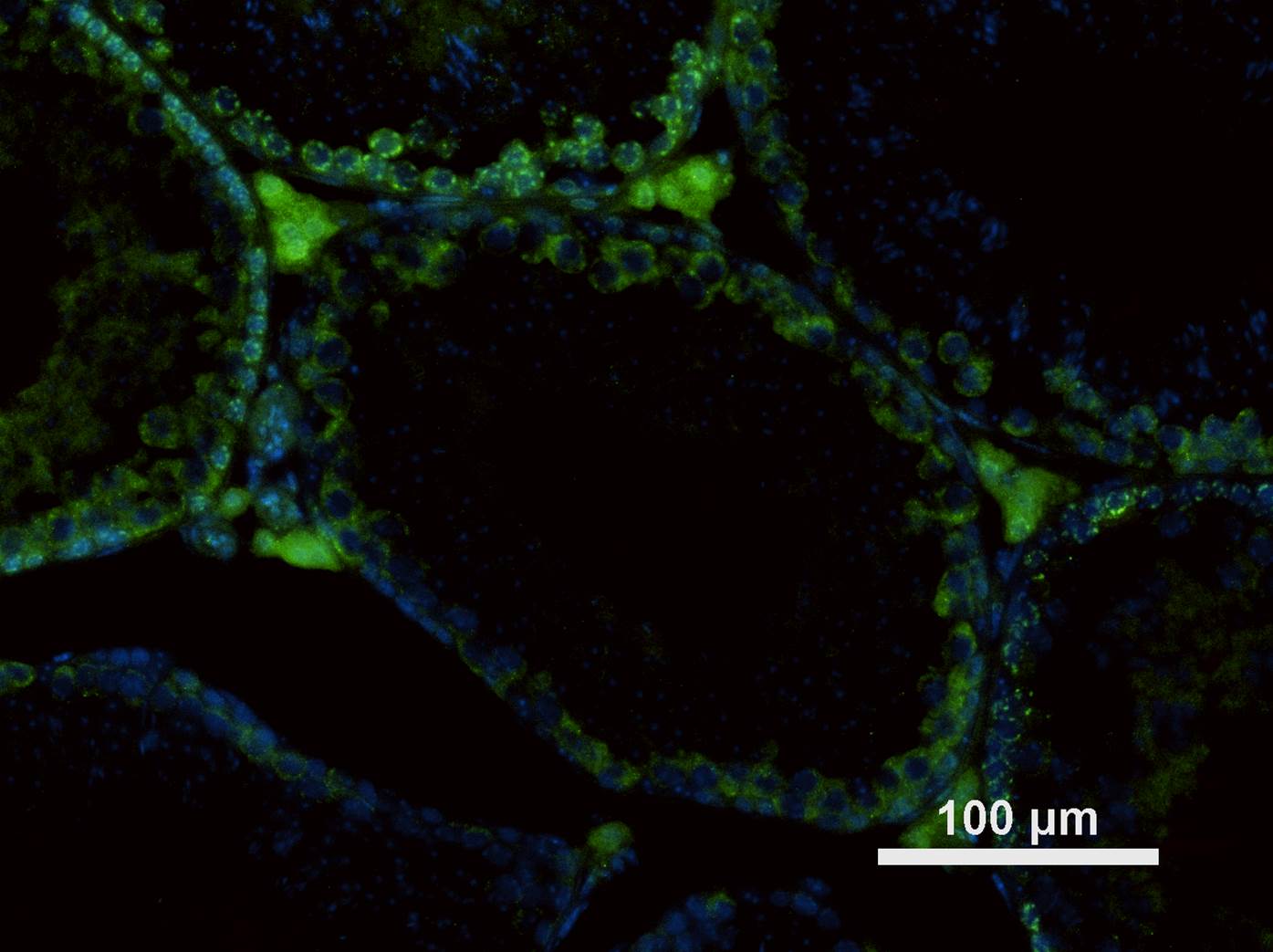 |
